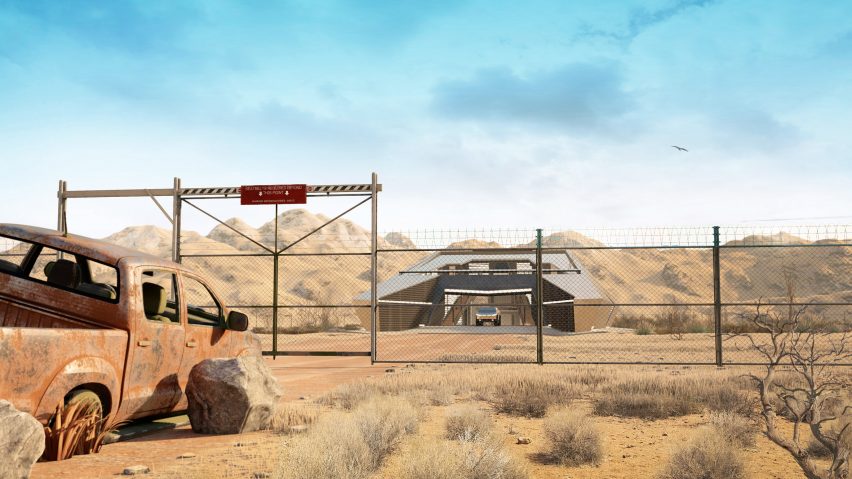
Eight homes, suits and kits for surviving an apocalypse
From a wearable survival kit to an underground bunker, here are eight homes, suits and kits designed to help people survive disasters such as climate change or asteroid strikes.
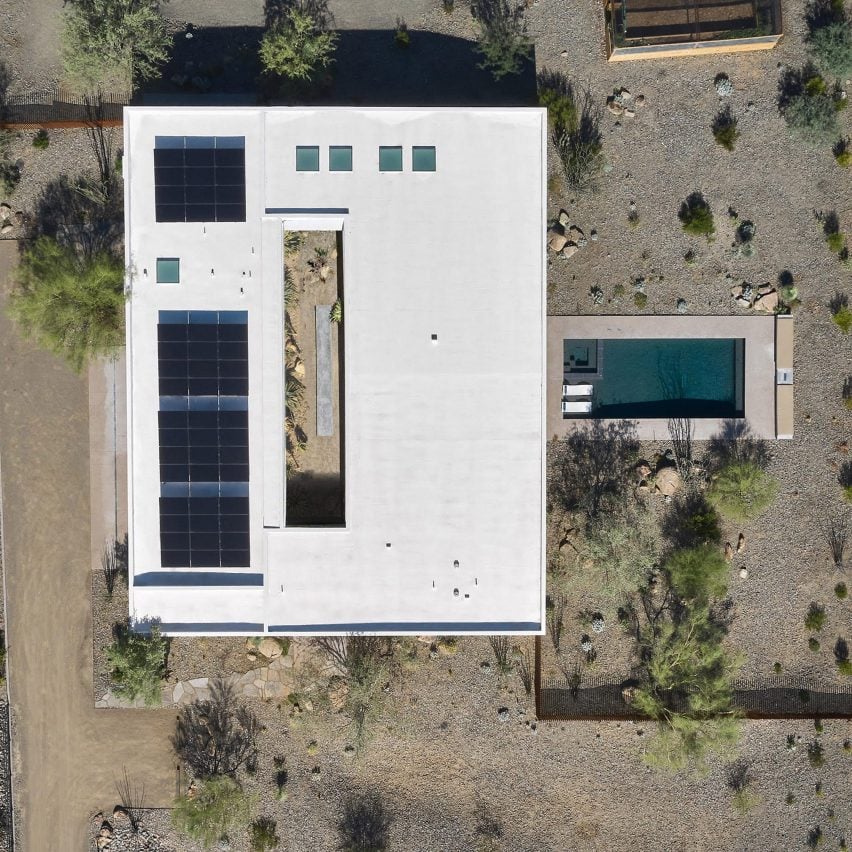
O-asis in Arizona, USA, by The Ranch Mine
This house in the Arizona desert was designed for clients who wanted to be able to produce their own food and power if they get cut off from the outside world by power-grid failure triggered by a climate event. The home has a vegetable garden while solar panels on the roof can keep the lights on and charge the owners' Tesla.
"They wanted to spend their money on being self-sufficient," said The Ranch Mine co-founder Cavin Costello. "The signs are pointing towards a situation where the weather, along with ageing infrastructure, are putting our most basic needs at risk."
Find out more about The Ranch Mine ›

Vivos xPoint in South Dakota, USA, by Vivos
California-based survival company Vivos is repurposing nearly 600 concrete military bunkers into survival shelters in the state's Black Hills.
Concerned people can lease a bunker on a yearly basis, and Vivos offers an extra service for decorating the space to make it more comfortable for waiting out an asteroid strike or nuclear war.
Find out more about Vivos xPoint ›
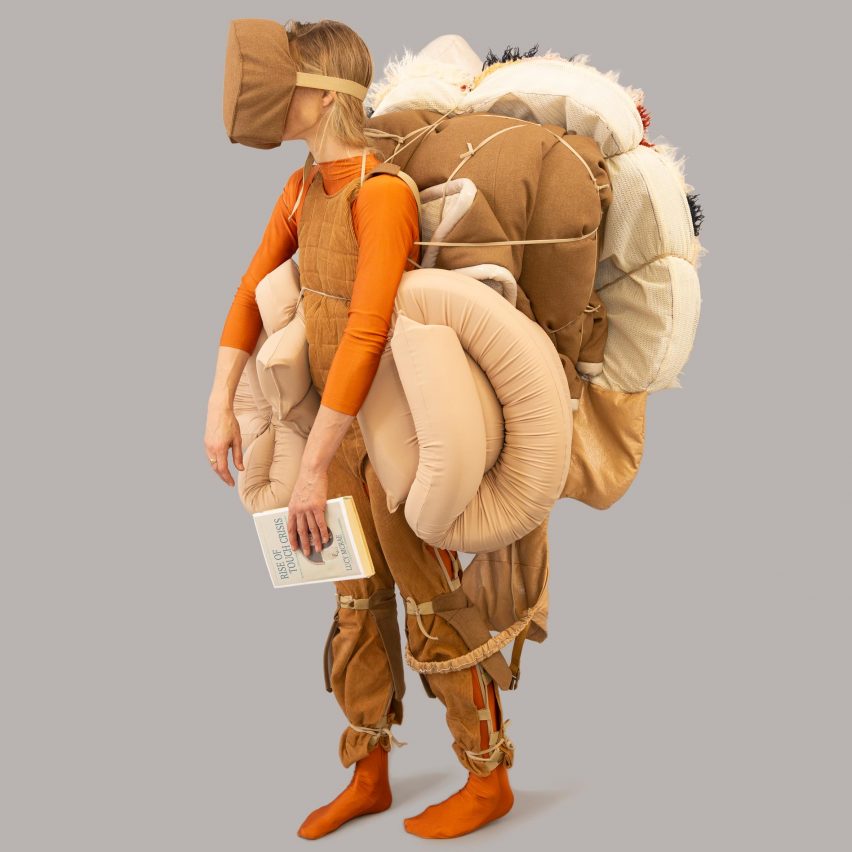
Future Survival Kit by Lucy McRae
Los Angeles-based artist Lucy McRae designed this wearable suit as an all-in-one piece of apocalypse survival gear worn like a snail shell. It unpacks to create a cosy portable shelter.
"Rarely do we create something significant without being confronted with the brink of disaster," McRae told Dezeen. "AI, the environment, automation – these themes are destabilising our cosy lives."
Find out more about Future Survival Kit ›
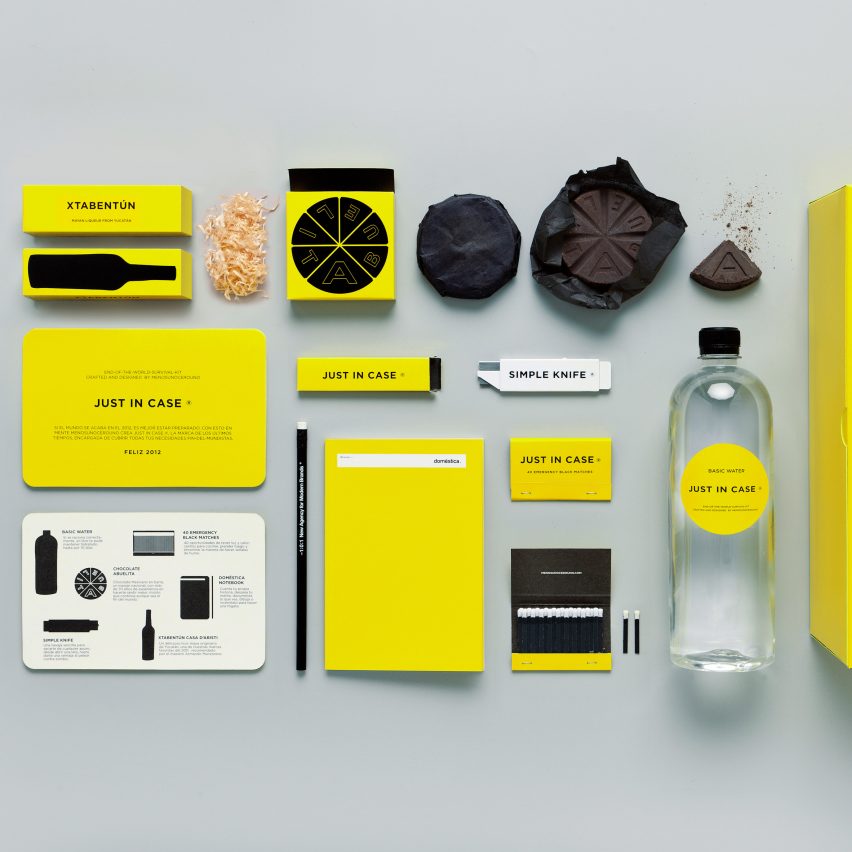
Just in Case by Menosunocerouno
Mexican branding company Menosunocerouno created Just in Case ahead of the 2012 doomsday scare to "cover all your basic apocalyptic needs".
With easy-to-locate neon yellow packaging, the kit contained essentials such as water, a knife and matches, along with chocolate and alcohol.
Find out more about Just in Case ›

Unseen Edible by Julia Schwarz
Designer Julia Schwarz made nutritious butter and pesto from lichen, a composite organism of algae and fungi, that could be used to help people survive the climate apocalypse.
"Researchers predict a coming food shortage caused by overpopulation and extreme climate," said Schwarz.
"Having a closer look at what people ate in famine times or for survival, lichen showed up several times. Starving people weren't dying anymore and they didn't have even deficiency symptoms."
Find out more about Unseen Edible ›
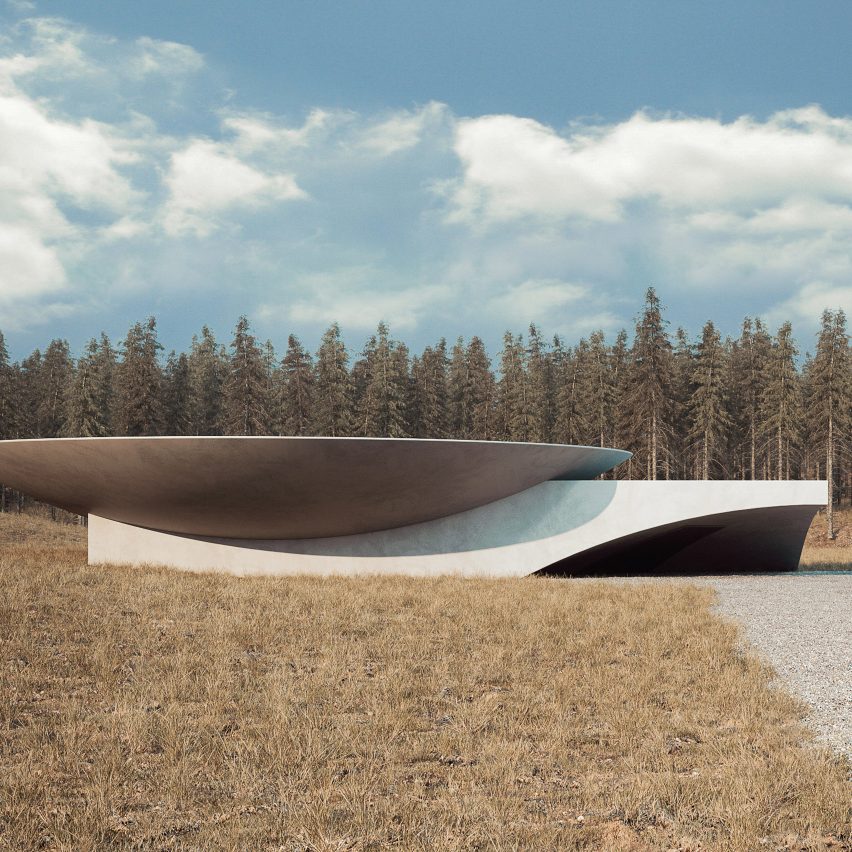
Underground House Plan B by Sergey Makhno Architects
As its name suggests, this concept is for a subterranean refuge hidden beneath a bunker-style entrance topped by a helipad for quick escapes. Sergey Makhno Architects designed the house in response to the start of the coronavirus pandemic in 2020.
"We realised that the world has many more unpleasant surprises for us," said the studio. "Even the most highly developed environmentally, socially and technically savvy countries may not be ready."
Find out more about Underground House Plan B ›
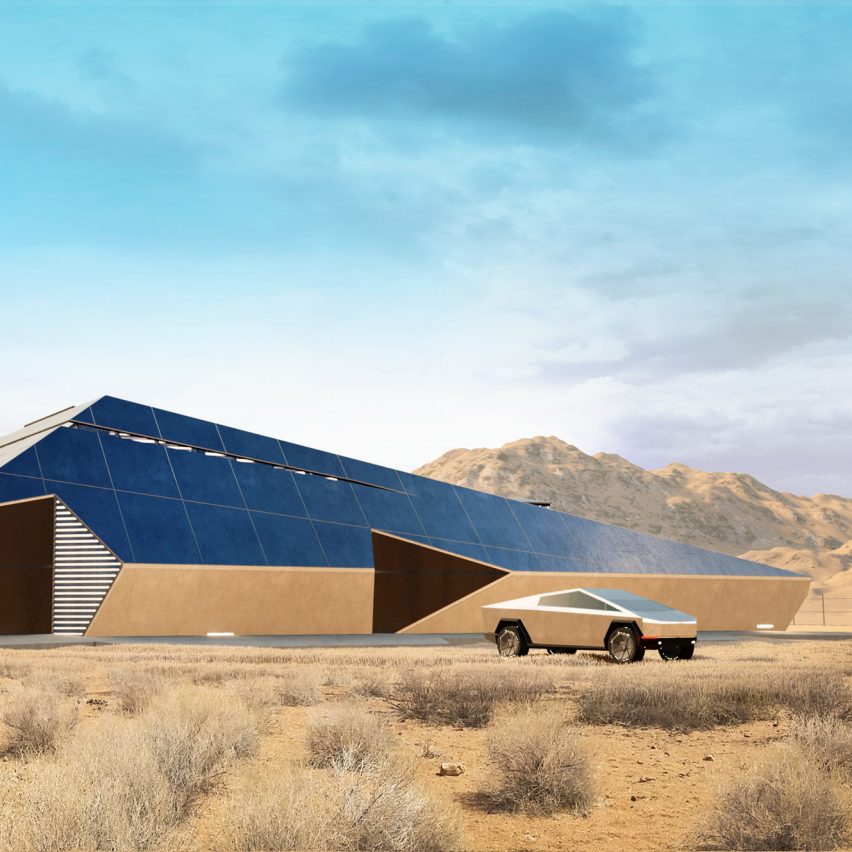
Cyberhouse by Modern House Architecture & Design
Taking its design cues from Tesla's Cybertruck, Cyberhouse is a concept for a fortified home for those planning to survive a zombie apocalypse complete with shielded windows and airlocks.
"Six or seven people can wait for it all to blow over here in comfort, taunting the zombies outside from complete personal safety," said Russian design studio Modern House Architecture & Design.
Find out more about Cyberhouse ›

Jacket to Help Prepare for the End of the World by Marie-Elsa Batteux Flahault ›
Design Academy Eindhoven graduate Marie-Elsa Batteux Flahault created this jacket as a grab-and-go garment for an end of the world scenario.
"I was exploring the end-of-the-world fever that expended with the 2012 Mayan prediction," Batteux Flahault told Dezeen. "While looking into this subject, I discovered the existence of the preppers."
The camouflage jackets come with inbuilt floatation devices, neon signalling flags, a foil blanket and a hood that turns into a face mask and visor. Knives are hidden in the sleeves and the hood comes with instructions for using its string as a trap.
Find out more about Jacket to Help Prepare for the End of the World ›